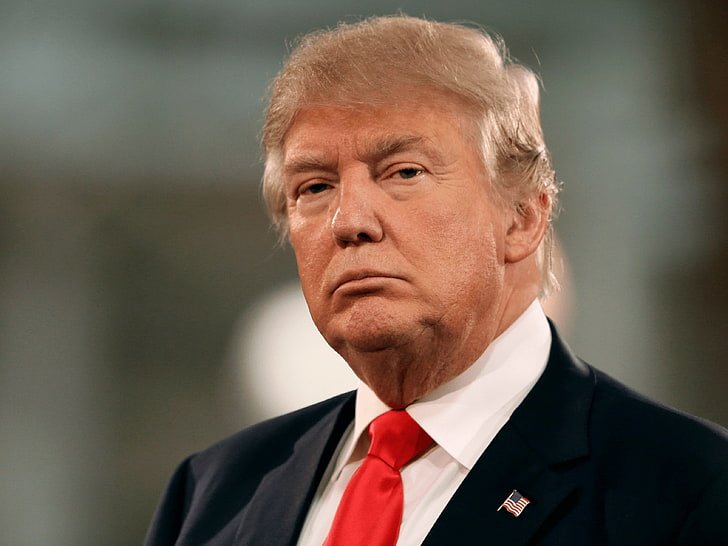USA Visa:
In a major shift in USA immigration policy, the Biden administration has lifted a ban on student visas of USA that has been in place since early 2024. This reversal is anchored by a carefully crafted new rule aimed at ensuring both national security and the resumption of educational exchanges. For international students, families, and universities, the move restores hope and opens pathways once again into American academia. But understanding this policy requires unpacking what led to the freeze, why the new rule matters, and its broader implications for all stakeholders.
The Background: Why the Ban Was Imposed
Precipitating Events
The ban was first introduced in February 2024, in response to a surge in student visa for USA denials involving applicants from certain countries flagged for heightened security concerns. These included applicants with ties to regions under surveillance for potential extremism or illicit educational partnerships. The administration argued that tightening student visa scrutiny was necessary to protect USA campuses from exploitation and safeguard sensitive academic and research infrastructures.
Universities across the USA depend on international students not only for global diversity but also for tuition revenue. These restrictions hit hard, straining budgets—particularly at smaller public universities in the Midwest and Northeast, where international enrollment represented a significant portion of student body growth.
Impact on Students & Institutions
The ban disrupted plans for tens of thousands of students who had already been admitted, forcing many to delay or cancel enrollment. Graduate students working on research projects—often funded by federal grants or USA companies—faced critical setbacks. Academic programs girded for diminished funding, and exchange partnerships with foreign universities cooled, causing a ripple effect.
Degree programs in science, technology, engineering, and mathematics (STEM)—fields that contribute significantly to USA research output—were particularly affected. One study estimated the visa disruption would reduce graduate STEM enrollment by as much as 15% in the 2024–25 academic year, threatening long-term pipelines of skilled talent.
The New Rule: What Has Changed
Key Provisions
In June 2025, the Department of Homeland Security (DHS) published a final rule that lifts the ban and reopens visa eligibility for all student applicants—subject to stricter vetting measures. Among the provisions:
-
Enhanced Background Checks: Applicants must now provide expanded personal declarations, including any past affiliations with academic programs linked to certain foreign governments or universities deemed high risk.
-
Targeted Security Screening: DHS and State Department agencies introduced an aggregate risk-rating criteria, incorporating new variables like applicant country of origin, study field, and prior travel to sensitive regions.
-
University Compliance Requirements: USA institutions must now certify that foreign students are applying to legitimate programs, have no ties to military-affiliated foreign schools, and consent to periodic DHS spot audits.
How It Differs from the Ban
Previously, the ban was categorical—some countries or fields were barred entirely. The new framework, in contrast, is designed as a case-by-case assessment, allowing virtually all applicants to proceed provided they pass the new review. It reflects an attempt to balance national security interests with academic openness.
Example: A student from Country X applying for a literature degree now gets expedited processing if their program is vetted, whereas earlier they would have been ineligible outright.
Implementation Timeline
-
June–July 2025: DHS issued interim guidance to consulates and universities.
-
August 2025: State Department reopened all student visa windows under the new rule.
-
September 2025: First wave of students began traveling to begin fall term.
-
December 2025 onward: DHS to launch random audits of universities to ensure compliance.
The Rationale Behind the Shift
Balancing Security and Academic Vitality
One key reason for rescinding the blanket ban was legal and economic pressure. Universities filed lawsuits, arguing the ban violated due process by arbitrarily denying admission to thousands. Simultaneously, the USA Chamber of Commerce and regional business coalitions warned of long-term economic losses if student inflows didn’t rebound.
“Restarting the flow of bright minds isn’t just good for campuses—it’s good for the future workforce.” — TU‑Chicago economist.
Policymakers concluded a targeted regime would achieve safety objectives without permanently hamstringing the system.
Global Competitiveness
The USA has long been the global leader in attracting international students; losing ground would strengthen education hubs in the U.K., Canada, and Australia. The competing countries quickly welcomed visa-stalled students during the ban months, raising fears “vaccine diplomacies” and alternative inflows.
Offering more transparent and flexible policy now serves both soft-power diplomacy—showing the USA remains open to global talent—and long-term geopolitical positioning.
Impacts & Initial Reactions
Universities Resilient, But Cautious
Deans and admissions directors report initial relief. Applications surged 30% in the first weeks—for both fall and spring terms—starting with students from affected countries.
“Our admit numbers are back, but we’re cautiously optimistic—we need to see processing stability too.” — Admissions director at SW‑State.
Many universities have invested in new compliance offices or hired legal advisors to manage the added DHS audit duties.
Student Perspective
Students express nervous optimism:
“I got my new I‑20 two weeks ago—I’m booking flights,” said Aisha, a mechanical engineering student from Jordan. “Still jittery about delayed consulate interviews.”
Others fear further extensions. The State Department anticipates an initial backlog of 100,000 student visa applications to clear by mid‑2026, suggesting wait times may linger through spring 2026.
Economic & Research Upswing
Economic analyses forecast a return of ~$5 billion in tuition and associated spending within two years, supporting over 60,000 service-sector jobs. In research, STEM-dependent programs—ranging from biomedical engineering to AI and quantum computing—are expected to restore previously stalled collaborations.
Industry groups and think tanks, including the American Association of Universities, labeled the new rule a “strong step toward regaining global preeminence.”
Challenges & Debates Ahead
Processing Delays
Even with the ban lifted, major consulates like Beijing and Delhi face multi‑month queues. DHS says it will consider mobile consulates, while universities are building flexible start dates to accommodate visa delays.
Security Effectiveness
Critics argue the enhanced vetting still relies on imperfect intelligence, which may miss risks or unfairly delay safe students. They call for improved training for consular officers and better data-sharing protocols with allies.
Political Polarization
Although the policy gained support from allies, some USA lawmakers still prefer tighter restrictions. They argue that more educational statecraft oversight is needed—especially in rapidly evolving technological fields.
Legislation has been introduced in both chambers aiming to add extra congressional oversight over university compliance before further expansions.
Compare & Contrast: US vs. Other Nations
United Kingdom
The UK has largely taken the opposite approach. Officials tightened post‑study work visa rules but kept student admission processes relatively flexible. UK university enrollment reports show slight declines, but fewer protracted visa restrictions.
Canada
Canada rose as a favored alternative during the USA ban, with its two-year open work permit after graduation being a major lure. But Canada’s new rule gives USA universities an opening to regain their competitive advantage.
Australia
Australia introduced biometrics checks for all applicants; but with no broad bans, student arrivals dipped only modestly. Their system demonstrates that with modality-focused screening (digital identity checks) the impact on inflows is minimal.
Buy Any Toyota Car Before June 25 and Save Up to Rs. 10 Lakh
What Prospective Students Should Know
-
Start Early
Expect high demand and slower processing—begin applications to universities and USA consulates at least six months before your intended start date. -
Prepare Documentation
-
Secure an I‑20 or DS‑2019 from your university.
-
Obtain national police certificates, transcripts, and if applicable, supplemental affidavits detailing non‑sensitive affiliations with foreign-sponsored research.
-
-
Anticipate DHS Requests
Provide prompt access to required interviews, personal statements, and supplemental forms on request. -
Consider Contingencies
Some universities offer “remote starts.” In recent semesters, 20–30% of international students began fall remotely due to visa delays. -
Stay Informed
Check DHS and State Department websites; embassies may post rapidly changing policies or temporary suspensions (e.g., due to regional crises).
Broader Geopolitical & Soft‑Power Implications
Education Diplomacy
International students traditionally serve as cultural ambassadors. Their return helps reframe the USA as accessible and culturally hospitable—beyond narrow political narratives. Several diplomatic voices within the State Department welcomed the policy as a restoration of academic ties.
Strategic Fields
Allowing select STEM students back is seen as crucial in areas like semiconductor design, biotech, and secure communications. Many programs now feature mandatory “Responsible Innovation” modules to align students with USA regulatory norms and values.
Future Collaboration
The new policy sets the stage for expanding dual-degree programs and joint research centers—for example, a new Asia–USA Center for Sustainable Energy at UT‑Dallas, which recently accepted 15 new scholars from India, Nigeria, and Vietnam.
Total Enrollment & Economic Impact
-
U.S. higher‑ed hosted 1.13 million international students in the 2023–24 academic year—a 7% rise over 2022–23—with a contribution of over $50 billion to the U.S. economy.
-
ICE’s SEVP reported 1.58 million active F‑1/M‑1 records in calendar year 2024, up 5.3% year-over-year.
Country Sources
-
India overtook China:
– ~331,600 Indian students (+23%) in 2023–24, forming ~29–30% of the total.
– Growth also strong from Bangladesh (+26%), Ghana (+45%), Nepal, Pakistan among others. -
China: ~277,400 students (−4.2%), still second-largest origin .
Academic Levels & Fields
-
Graduate enrollment hit record highs: ~502,000 (+8%) .
-
Undergraduate figures remain lower: ~343,000 (−1%) .
-
OPT participation soared: ~243,000 students (+22%) .
-
STEM dominance: 56% of international students are in STEM; a quarter in computer science.
Geographic Hotspots
-
California (237,700), New York (172,500), and Texas dominate enrollment counts.
-
The Midwest saw fastest percentage growth in international enrollments, though absolute numbers are highest in coastal and Sunbelt states .
Policy & Security Landscape
New Vetting Measures
-
The policy shift includes requiring student visa applicants to make social media profiles public for vetting purposes.
-
The State Department halted visa processing briefly (May 2025), citing enhanced security screening, before resuming it for F, M, J visas.
Political & Legal Setting
-
Emerging tensions from the Trump-era crackdown: e.g., revocation attempts on Harvard’s certification—still under court injunction.
Ongoing debates continue over balancing national security with maintaining educational diversity .
Conclusion
The Biden administration’s decision to lift the student visa ban of USA—with the introduction of a carefully calibrated new rule—marks a pivotal moment for U.S.A higher education. It reflects the nation’s attempt to remain open, competitive, and secure all at once.
As universities retool their admissions and compliance practices, as embassies ramp up staffing, and as students navigate new requirements, the coming academic years will test the resilience of this updated regime.
For students, this means renewed opportunities—but also greater diligence in preparing and planning. For universities, it offers a lifeline—but not a return to pre‑2024 routines. And for the USA itself, it’s a step toward reasserting global academic leadership—without compromising on safety and security.
The success of this policy will depend not only on its detailed implementation but on continued collaboration—among universities, governments, and students—across continents.




